Te hokinga mai
We welcome te hokinga mai (the return home) of more than 5,000 photographs. Read about the journey of the photographs, the rich visual history they tell of te ao Māori and what we are doing to make them available.
Newspaper photo archive
At the end of last year, Alexander Turnbull Library and staff from across the National Library were delighted to welcome home from the United States more than 5,000 photographs from what has come to be known as the ‘Fairfax Archive’. The collection of photographic prints comes from six major newspapers around Aotearoa New Zealand, including the Dominion Post, Manawatu Standard, The Press, Southland Times, Sunday Star Times, Taranaki Daily News, Timaru Herald, and the Waikato Times.
The story of how these photographs came to be overseas is a complicated one that received much coverage in the media (RNZ, The Post, The Guardian), but the Library is grateful to be in the position to bring these photos into our care.
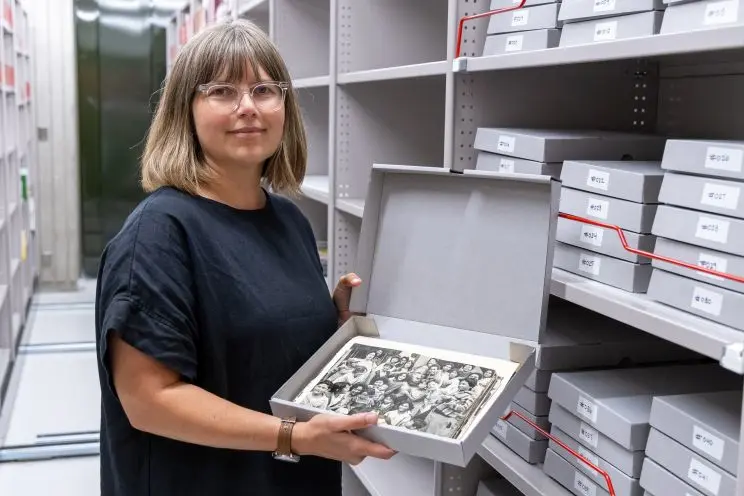
Jess Moran, Associate Chief Librarian at the Alexander Turnbull Library, with one of the many boxes of photographic newspaper prints. Photo by Mark Beatty.
Telling the stories of Aotearoa
The photographs are significant national taonga that will help us tell the stories of Aotearoa. Spanning the length of the country and almost 70 years of history, the collection has a unique depth and breadth.
Additionally, the material history of the images as products of national and regional newspaper publishing drawn from working newspaper photo libraries, adds to their research value by providing historical context.
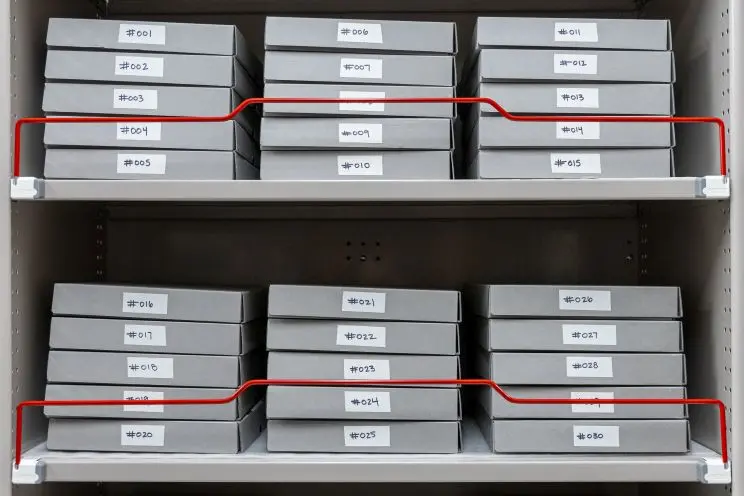
The photos are stored in archival boxes. Photo by Mark Beatty.
Visual history of Te Ao Māori
The 5,000 photographs we purchased are a rich and moving visual history of Te Ao Māori, as recorded by newspapers from the late 1920s through to the 1990s. Alongside familiar faces like Dame Whina Cooper, Dame Kiri Te Kanawa, King Korokī and Witi Ihimaera, many communities, whānau and individuals are represented.
The images document the emergence of movements, such as Kōhanga Reo, the resurgence of te reo Māori and the ongoing presence of Māori art forms such as raranga (weaving) and whakairo (carving), while also capturing representations of everyday life in Aotearoa throughout the twentieth century.
Protests are well-represented, including the occupation of Takaparawhau/Bastion Point in 1977-78 resisting a proposed Crown sale. The collection also includes images of this site in the decades leading up to the protests.
Listen to Paul Diamond, Curator Māori talk to Waatea.com about the photographs
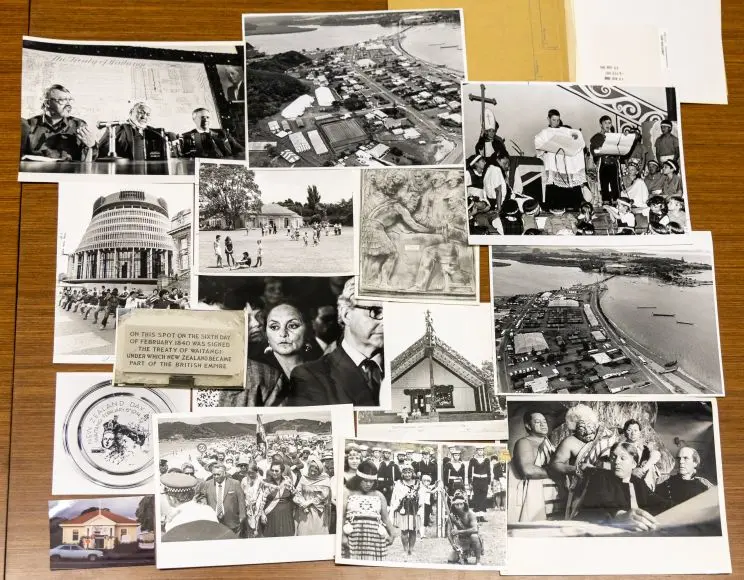
Some examples of the newspaper prints from the collection. Photo by Mark Beatty.
What we purchased
Along with the physical photographic prints, the Library also purchased the associated digital images which were created by the Duncan Miller Gallery. These digitised images will be added to our digital preservation repository (the National Digital Heritage Archive (NDHA)) as part of our processing of the collection.
The physical photographic prints are from newspaper reference libraries and sometimes include information about the image, for example, the date, the caption, maybe the whole story and the photographer.
The original photographic negatives are separate, and it is our understanding that these never left New Zealand. While the Turnbull Library holds the negatives for images from the Dominion and Evening Post newspapers, the negatives from other newspapers are held in other places around the country, including the newspaper offices, as well as other libraries and archives.
Digitised copies of the entire collection of original prints that were sent to the US were supplied back to Stuff and continue to be held by them.
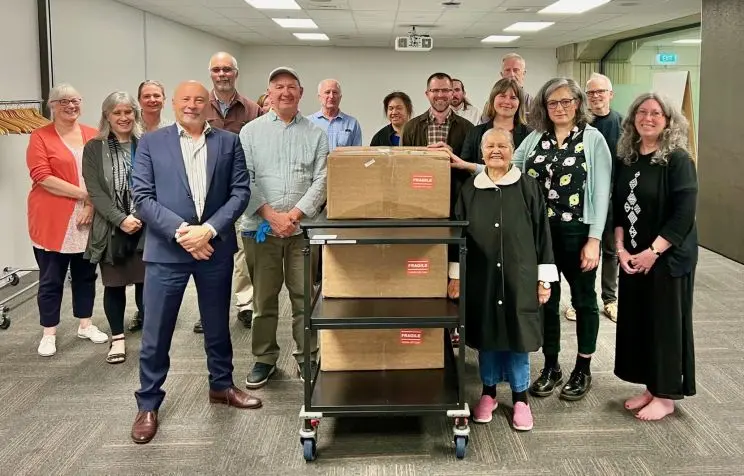
Turnbull and National Library staff formally welcomed the photographs into the Library.
One of the questions we get asked is what will happen to the rest of the material from the Fairfax archive, estimated at some 1.4 million photographs. The entire collection is vast and would require far more resources than any one Library can manage both in terms of storage space and people to care for them.
To put it in perspective, our current photographic collection sits at around 1.6 million items including prints, negatives, albums, digital photographs, and other formats, and it’s likely to take us at least a year to complete the mahi to prepare these 5000 prints for public access.
We are committed to preserving, in perpetuity, anything we add to the Alexander Turnbull Library’s collections. Decisions about what to collect are guided by the Library’s collections policy and collecting plans. We take into serious consideration our ability to provide sufficient care for the long-term before we agree to add new material.
In this case, we know that historical photographs depicting Māori have high research value and are in high demand. Given the wide interest in the photographs and, coupled with the fact that as prints they are easily accessible and rich in terms of content, as taonga, we agreed that it was important to add them to the Turnbull Library’s collections.
The collection also complements some of the Library’s other newspaper photographic archives, including the Dominion (PA-Group-00685 ) and Evening Post (PA-Group-00287).

Turnbull and National Library staff with the newly-arrived photographs from the Fairfax Archive. Photo by Mark Strange.
Processing the collection
Before we can share this collection more widely, we need to do the mahi to preserve, arrange and describe the photos to enable users to search for and access them.
One of the reasons these photos are valuable is they often include some descriptive information, such as who was in the photo, the date, and a newspaper clipping of the original caption from the paper, taped to the back.
This contextual information will become the basis for the metadata we create to describe the photographs. Once this descriptive work is complete the photographs will be made available for researchers.
As the work progresses over the next year, we’ll be sharing the journey and our mahi, to keep you updated.
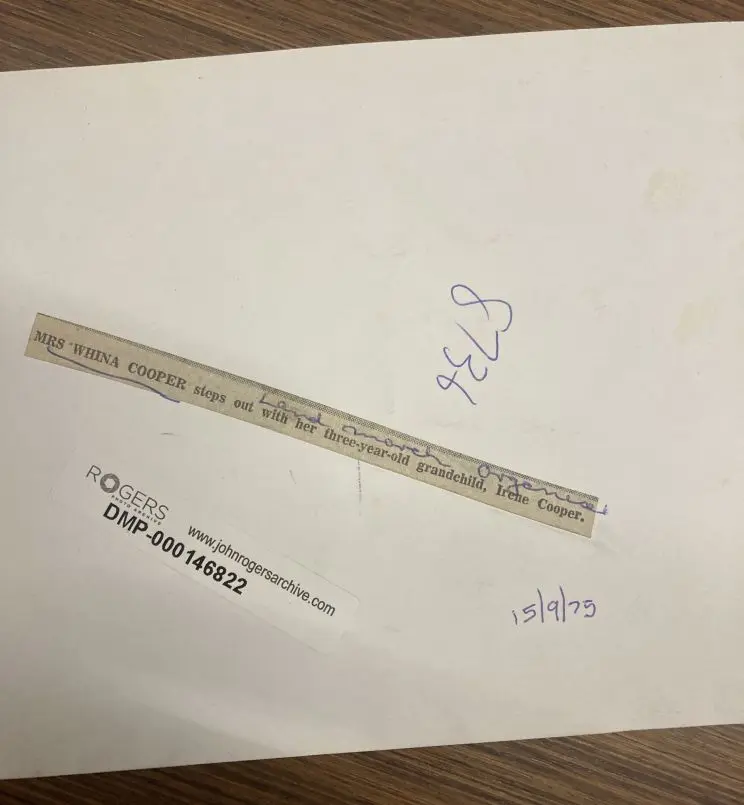
The reverse side of one print has a caption that reads, "Mrs Whina Cooper steps out with her three-year-old grandchild, Irene Cooper." Along with this information is a date 15/9/75 and the handwritten words 'land march organiser'.
Once the photos are ready, we want to connect them with iwi, hapū, whānau and Māori organisations or anyone who knows more about the photos and the people in them.
Our initial descriptions aim to help connect with those associated with the images.
Any additional information about the photos will help us improve the descriptions, making the images easier to find.
Thanks to Paul Diamond, Louise Garrett, Katrina Tamaira and Kimberley Stephenson for assistance in writing this post.